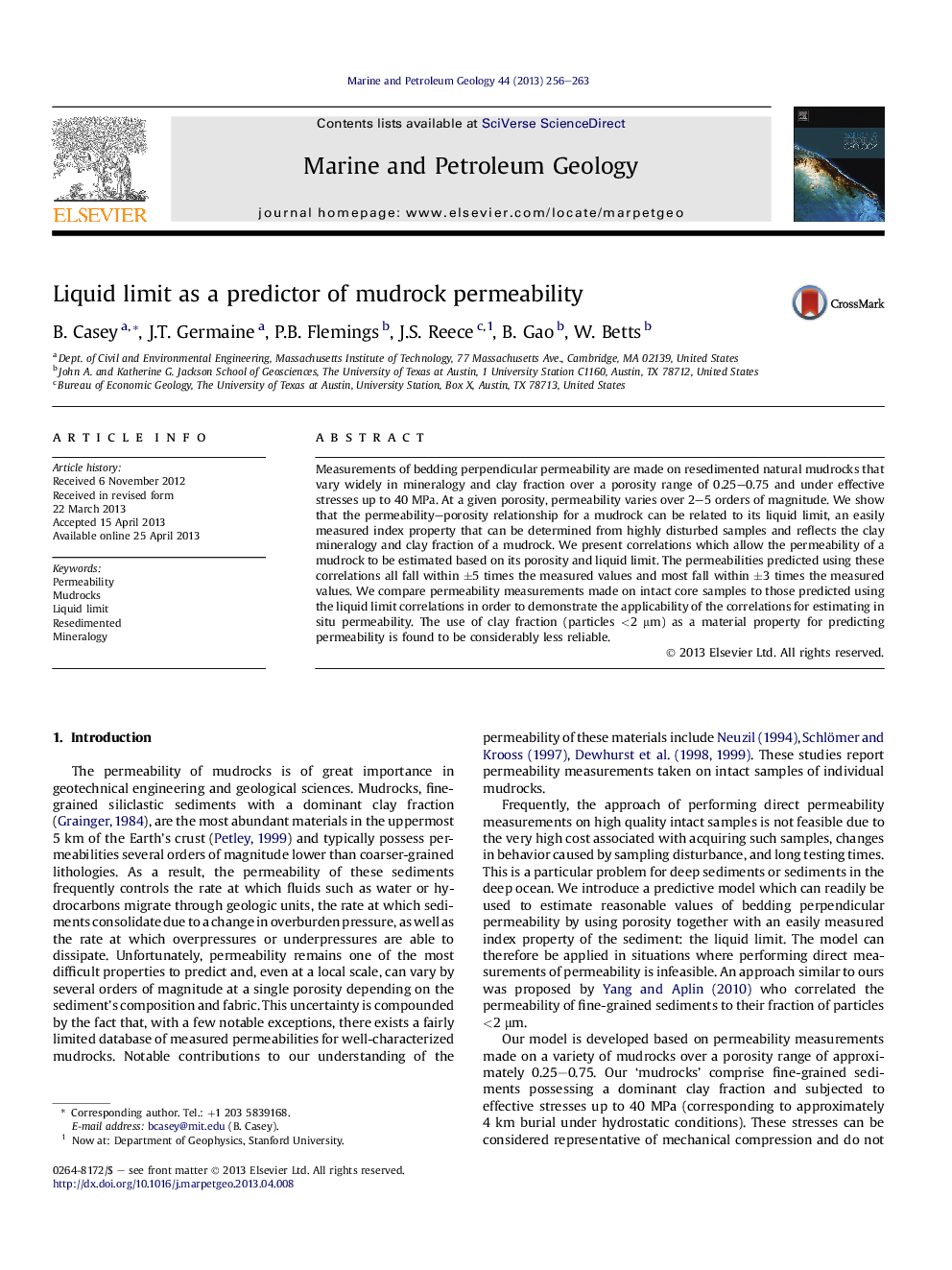| Article ID | Journal | Published Year | Pages | File Type |
|---|---|---|---|---|
| 4695699 | Marine and Petroleum Geology | 2013 | 8 Pages |
•Permeability measurements are made on mudrocks over a porosity range of 0.25–0.75.•The mudrocks studied vary widely in mineralogy and clay fraction.•The permeability–porosity relationship for a mudrock can be correlated to its liquid limit.•Permeabilities estimated using liquid limit fall within ±5 times the measured permeabilities.•Liquid limit can be used to estimate in situ permeability.
Measurements of bedding perpendicular permeability are made on resedimented natural mudrocks that vary widely in mineralogy and clay fraction over a porosity range of 0.25–0.75 and under effective stresses up to 40 MPa. At a given porosity, permeability varies over 2–5 orders of magnitude. We show that the permeability–porosity relationship for a mudrock can be related to its liquid limit, an easily measured index property that can be determined from highly disturbed samples and reflects the clay mineralogy and clay fraction of a mudrock. We present correlations which allow the permeability of a mudrock to be estimated based on its porosity and liquid limit. The permeabilities predicted using these correlations all fall within ±5 times the measured values and most fall within ±3 times the measured values. We compare permeability measurements made on intact core samples to those predicted using the liquid limit correlations in order to demonstrate the applicability of the correlations for estimating in situ permeability. The use of clay fraction (particles <2 μm) as a material property for predicting permeability is found to be considerably less reliable.
